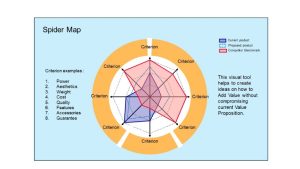Today, businesses are always trying to make their products and services better, cheaper, and more valuable. Advanced engineering techniques offer a strategic approach to achieving these goals. By integrating value engineering, future-proofing strategies, and innovative manufacturing processes like injection moulding, companies can ensure sustained growth and customer satisfaction.
Value Engineering in Action: Real-World Applications and Case Studies
Simply put, Value Engineering is how to ‘engineer’ value into products or even services. This is a conscious effort focused on meeting a targeted goal. This does not suggest that products are often designed without conscious thought towards adding value, but Value Engineering is simply one step further.
The most common goal of ‘Value Engineering’ is to find ways to increase prices by exploring how to add perceived customer value. This is usually done over a team event, where many are invited to think about which new features would customers find useful.
For example, the Spider Map example is an idea-generation tool often used by Marketing. In most instances, we already have a product, and we may wish to compare it to our competitor (benchmark) products. The Spider Map is a simple way to visualize gaps which could develop into ideas, which could add value to the customer.

Some simple examples of adding value would be :
- a) Using a special filter at the exhaust of vacuum cleaners, which improves the quality of air leaving the exhaust, this could be a feature to measure the air quality before and after, thus adding value that the air is also cleaned, whilst cleaning the carpet;
- b) Making the juicer inlet big enough to throw a whole apple in, thus without wasting time to cut the apple into pieces first;
- c) Redesigning a platform of accessories (as per figure above), thus allowing many products to share these same accessories, which gives the customer the option to re-use all the attachments for other products as well;
- d) Re-designing the cardboard packaging boxes to protect the products internally as well, as removing the need for foam material; thus integrating the functionality of the foam into the cardboard box (somehow).
There are many recent applications with the Internet of Things (IoT) which are great examples of where we connect appliances via home network or Bluetooth.
Very often, adding additional value will also incur additional costs, and as such the total cost needs to be evaluated, to justify the final business case.
One way to perceive the value vs cost would be via a Value Analysis, to review the whole Bill of Materials, and allocate each item (fully or partially) towards a certain perceived value. This will show what proportion of the total cost of the product is spent for every specification or feature. This can also trigger ideas on where to focus.
The result is an overview of how much of the total cost is divided over each value.
| Value (example) | Cost (%) |
| Power | 10% |
| Aesthetics | 20% |
| Weight | 10% |
| Cost | 30% |
| Quality | 10% |
| Features | 10% |
| Accessories | 5% |
| Guarantee | 5% |
| Total Product Cost | 100% |
Doing the Vvalue Engineering together with Value Analysis, is a powerful combination to make strategic business decisions on how to meet customer expectations and at what ‘cost per value’.
Future-Proofing Businesses with Value Engineering: Trends and Predictions
Every organization wants to survive, but in the current global economy, many organizations do not get past 10 years. Why? Many resort to Cost Cutting, Outsourcing, and even towards Mergers and Acquisitions, but all these are slippery paths, with no guarantees.
What would be instrumental for every organization, on how to survive? What would companies need to do, on ‘future-proofing’ themselves? The latest buzzwords are to use Artificial Intelligence (AI), Machine Learning (ML), 3D Printing, the Internet of Things (IoT), etc. But without a solid foundation, this will merely be short-term gains with the ‘flavour of the month’ type of thinking.
The core goal is “how to continuously add value to customers at the right cost?”. Having Innovation means continuously adding value, which is critical. But also at the right Cost, which usually refers to having Operational Excellence. Another approach could be to create a niche market (Blue Ocean) with limited (or no) competition. Though these organizations may start with a dominant market share and lead the pack, this needs constant review to keep their lead.
Whether you are vertically integrated or have outsourced most of your processes, Operational Excellence is critical to any business. This is to be able to produce at the lowest cost and as efficiently as possible; otherwise, your competition will do this.
Many organizations, still have paper-based sequential processes, which can be improved using IT systems, such as:
- Digital Documentation
- Automatic approval and workflow
- Enterprise Planning
- Customer Relationship
- Remote Work access
A word of gentle advice that most IT system solutions come also with specific issues, such as compatibility and cybersecurity. But no organization will survive without proper IT systems. Driving Innovation and Operational Excellence, both need data, and the future is pointing towards seamless IT integration for live data analysis to detect, correct, or even prevent issues immediately.
The future is already here. Yes, IT will help, but every company will soon start to use the same systems. To be future-proof is not dependent on the tools or technology but the Mindset, and courage to challenge and continuously adapt.
Advanced Injection Molding Techniques: Reducing Costs and Enhancing Quality
Over the years, Injection Molding technology has improved with a myriad of spin-out technologies, where some could also include current 3D Printing as an example.
But why do we use injection molding in the first place, at all? Simply because we can produce complicated shapes in a fast way, which is often not possible or too expensive for metals. Plastic injection moulding can easily be ramped up for high volumes if necessary. Thus over the last decades, we have seen more plastic parts, and newer types of plastic materials as well, with special technical specifications.
Okay so we have a complex process to make complex parts, but can we control it? Yes, that is the quick answer. We not only can do simulations of the process itself but to improve the temperature profile and gating; and most injection moulding machines have sensors at every process step, which are controlled by algorithms that keep the processes within limitations for optimum performance.
Optimum process control implies high yields, which means minimal waste and the best value for money. Furthermore, these machines can also be positioned in the production itself, where automation with robotics can work seamlessly, continuously optimizing the process flow with Data Analytics and AI, as well. These types of production lines often only need a few employees to monitor the full production lines, the live scoreboards.
Thinking along Lean principles, many organizations often choose to use ‘family moulds’ where all the necessary parts are made in one cycle, in one mould. This helps to control stock and obsolescence.
But what if using plastics alone does not always meet the full functional specifications? In such instances, many choose to do 2 component moulding. Sometimes this can be a metal part with plastic moulded over, or could also be 2 types of plastic (resin) materials moulded together. The diversity of possible ways to find new technologies with plastics is endless.
In recent years, there has been more interest in recycling and re-using materials, and this is not always easy, as this tends to downscale the material properties as a whole. However innovative organizations have found mass applications for such re-cycled plastic materials into long-term applications, such as roads and housing.
In essence, injection moulding is embedded in our technology and is still the favourite technology for Cost and Quality, in most industries.
Conclusion
Incorporating advanced engineering techniques such as value engineering, operational excellence, and sophisticated manufacturing methods like injection moulding can significantly enhance business value. These methods help cut costs and make high-quality products that customers love. By keeping up with technology and always trying new ideas, businesses can stay ahead and do well in a competitive market.
![The-Profit-Engineer-[NEW]-re-design](https://theprofitengineer.nl/wp-content/uploads/2023/08/The-Profit-Engineer-NEW-re-design-logo-2023-horizontal-original.png)




